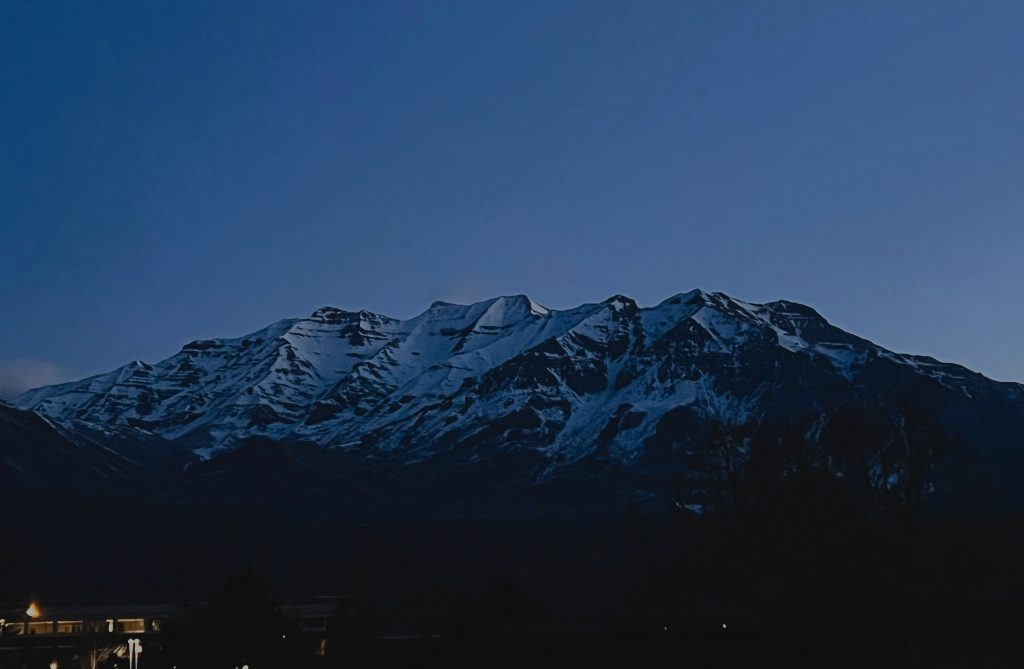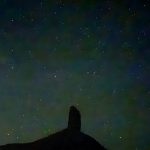
If you go north long enough, eventually you’ll go south. But if you go west forever, you’ll never go east.
That simple geographic truth has stuck with me—and it turns out, it’s a pretty good guide for how we move through life.
Some paths take us somewhere new. Others just keep us busy.
We talk a lot about progress—moving forward, gaining ground, chasing goals. But forward motion isn’t always the same as real growth. A train can barrel ahead and still be on the wrong track.
Progress without direction is just noise.
Progress without reference is wandering.
Progress without surrender is chasing your own tail.
Not long ago, I stood in a wide, flat valley in southeastern Idaho. No peaks. No shadows. At any given moment, any direction could’ve been north. I wasn’t lost—but I had no idea how to stay found. I missed the mountains. Back home, I can glance at the ridgeline—day or night—and know exactly where I am. I look up, I get my bearings.
I try to do the same spiritually. When life feels disorienting, I pause. Pray. Sit still. Not always for answers, but for orientation. A reminder of who I’m walking toward.
Because it’s easy to confuse busyness with purpose. Easy to chase the next thing just to avoid sitting still with the last one.
That’s what west can look like. It feels like freedom. “Go west, young man,” Horace Greeley wrote in the 19th century, urging Americans to chase opportunity across an untamed frontier.
But the horizon can lie. Just because you’re in motion doesn’t mean you’re moving toward something that matters. You can make the sun hover at the horizon if you move fast enough. Feels magical—but it’s an illusion. You’re just postponing nightfall.
I think a lot of us do that. We stay in motion so we don’t have to reckon with stillness. But stillness is often where direction becomes clear.
There’s another way. Harder, slower—but real. North. The path that asks something of you. The one that might cost you something. That’s repentance—not guilt, but re-orienting. Not just turning away from something, but turning toward something better.
Jesus didn’t say, “Go wherever feels right.” He said, “I am the way.” That’s not vague. That’s a bearing. A reference point. The one fixed star.
When I lose track of where I am, I try to come back to that—like checking the mountains at night. Spiritual practices—prayer, scripture, quiet—are how I do it. They don’t shift. They don’t depend on how I feel. They help me reset.
That’s why sailors, nomads, and prophets used Polaris. It’s not the brightest star, but it’s fixed. You could steer by it. For me, that’s Jesus. He doesn’t spin with the weather or public opinion. He holds.
So here’s the takeaway:
Motion isn’t the same as meaning. Drifting isn’t the same as growth. And the only path that transforms is the one that costs you something—and takes you somewhere new.
If you go north long enough, you’ll cross a line that changes you.
If you go west forever, you’ll just keep going.
What’s your compass fixed to? It’s why I still check the ridgeline before I start the day.
“Stand at the crossroads and look; ask for the ancient paths, ask where the good way is, and walk in it. And you will find rest for your souls.”
—Jeremiah 6:16





